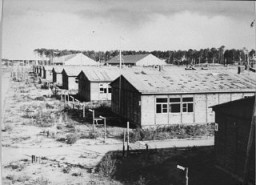You searched for: Ghettos
<< Previous | Displaying results 951-1000 of 1236 for "Ghettos" | Next >>
-
Thomas Buergenthal describes a forced-labor camp in Kielce
Oral HistoryThomas's family moved to Zilina in 1938. As the Slovak Hlinka Guard increased its harassment of Jews, the family decided to leave. Thomas and his family ultimately entered Poland, but the German invasion in September 1939 prevented them from leaving for Great Britain. The family ended up in Kielce, where a ghetto was established in April 1941. When the Kielce ghetto was liquidated in August 1942, Thomas and his family avoided the deportations to Treblinka that occurred in the same month. They were sent…

-
Doris Greenberg describes arrival procedures at Ravensbrück
Oral HistoryThe Germans invaded Poland in 1939 and established a ghetto in Warsaw in 1940. After her parents were deported, Doris hid with her sister and other relatives. Doris's sister and an uncle were killed, and she learned that her parents had been killed. Her grandmother committed suicide. Doris was smuggled out of the ghetto and lived as a non-Jewish maid and cook, but was ultimately deported to the Ravensbrück camp. Upon arrival there, Doris and her friend Pepi contemplated swallowing poison, but decided…

-
Blanka Rothschild describes forced labor in the Ravensbrück camp
Oral HistoryBlanka was an only child in a close-knit family in Lodz, Poland. Her father died in 1937. After the German invasion of Poland, Blanka and her mother remained in Lodz with Blanka's grandmother, who was unable to travel. Along with other relatives, they were forced into the Lodz ghetto in 1940. There, Blanka worked in a bakery. She and her mother later worked in a hospital in the Lodz ghetto, where they remained until late 1944 when they were deported to the Ravensbrueck camp in Germany. From Ravensbrueck,…
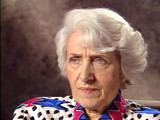
-
Barbara Marton Farkas describes assistance from the Red Cross at the end of the war
Oral HistoryDescribes assistance from the Red Cross at the end of the war
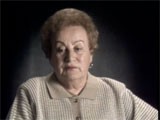
-
Blanka Rothschild describes antisemitic regulations in occupied Lodz, Poland
Oral HistoryBlanka was an only child in a close-knit family in Lodz, Poland. Her father died in 1937. After the German invasion of Poland, Blanka and her mother remained in Lodz with Blanka's grandmother, who was unable to travel. Along with other relatives, they were forced into the Lodz ghetto in 1940. There, Blanka worked in a bakery. She and her mother later worked in a hospital in the Lodz ghetto, where they remained until late 1944 when they were deported to the Ravensbrueck camp in Germany. From Ravensbrueck,…
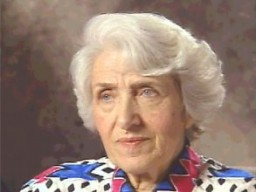
-
Combating Holocaust Denial: Evidence of the Holocaust presented at Nuremberg
ArticleAt the Nuremberg trials, Allied prosecutors submitted documentation left by the Nazi state itself. This evidence is a lasting refutation of attempts to deny the Holocaust.

-
Freiberg
ArticleLearn about the Freiburg subcamp of Flossenbürg, including its establishment, prisoner population, and conditions there.
-
Forced Labor: In Depth
ArticleForced labor, often pointless, humiliating, without proper equipment, clothing, nourishment, or rest, was a core feature in the Nazi camp system from its beginnings in 1933.

-
München-Schwabing
ArticleLearn about the establishment and history of the Dachau subcamp München-Schwabing, and the role of Eleonore Baur (also known as Schwester Pia or Sister Pia).
-
Bremen-Farge
ArticleLearn more about Bremen-Farge, a subcamp of Neuengamme where the majority of prisoners were used to construct an underground U-boat shipyard for the German navy.

-
Halle
ArticleHalle an der Saale was a satellite camp of Buchenwald concentration camp. It was established by the Nazis in Saxony, Germany in 1941.
-
Oranienburg
ArticleThe Oranienburg concentration camp was established as one of the first concentration camps in Nazi Germany on March 21, 1933. Learn more

-
Mannschafts-Stammlager (Stalag) IX B
ArticleIn 1939, the Nazis established the Mannschafts-Stammlager (Stalag) IX B camp in Germany. Learn more about the camp’s history, prisoners, and liberation.
-
Ezra Zelig Szabasson
ID CardEzra Zelig, who was called Zelig by family and friends, worked in the lumber business in Kozienice, a village by the Kozienice birch forest. He was married and the father of six children. A prominent member of the community, Zelig served on Kozienice's city council, and was also president of the local Zionist organization. 1933-39: In 1937 Zelig tried to obtain visas for his family to immigrate to Palestine [the Yishuv], at that time a British protectorate, but was unsuccessful because of the…

-
Israel Yitzak Kisielnicki
ID CardThe youngest of three children, Israel Yitzak was born to Jewish parents living 35 miles east of Warsaw in the small, predominantly Jewish town of Kaluszyn. Israel's mother was a housewife, and his father was a merchant who often traveled on business, by horse and wagon, to Warsaw. Israel attended public school and also received religious instruction. 1933-39: When Germany invaded Poland several days ago, many kids Israel's age, afraid of what would happen if the Germans occupied Poland, fled to the USSR,…

-
Ida Edelstein
ID CardIda, born Ida Kohn, was the oldest of four children born to a Jewish family in the village of Hostoun, near Prague. Her father owned a grocery store in the village, and also recorded the birth, death and marriage certificates in the Jewish community. In 1912 Ida married Josef Edelstein and they moved to Vienna. By 1920 the couple had a son, Wilhelm, and a daughter, Alice. 1933-39: In March 1938 the Germans annexed Austria. In the next few weeks, Ida, along with other Jews, was forced to scrub sidewalks.…
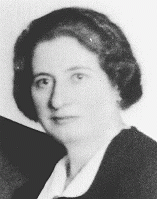
-
Maria Orlicka
ID CardMaria was born to a poor family in the industrial town of Jaworzno, not far from Krakow, in southwestern Poland. Both of Maria's parents worked. Like her parents, Maria was baptized in the Roman Catholic faith. 1933-39: Maria took care of the house when her parents were working. She was 11 years old when the Germans invaded Poland on September 1, 1939. German troops reached Jaworzno that same month. Jaworzno was in an area of Poland that became formally annexed to Germany. 1940-44: The Germans arrested…
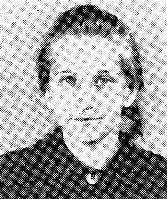
-
Robert Kulka
ID CardRobert was the son of Jewish parents, Leopold and Florentina Kulka, and was raised in the Moravian town of Olomouc. After completing secondary school, he attended a business school until 1909. He began a business in Olomouc and in 1933 he married Elsa Skutezka from the Moravian city of Brno. The couple made their home in Olomouc. 1933-39: The Kulkas' son, Tomas, was born a year and a day after they were married. In 1937 Elsa's father passed away and the Kulkas moved to Brno, where Elsa and her husband…
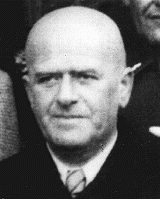
-
Tomas Kulka
ID CardTomas' parents were Jewish. His father, Robert Kulka, was a businessman from the Moravian town of Olomouc. His mother, Elsa Skutezka, was a milliner from Brno, the capital of Moravia. The couple was well-educated and spoke both Czech and German. They married in 1933 and settled in Robert's hometown of Olomouc. 1933-39: Tomas was born a year and a day after his parents were married. When Tomas was 3, his grandfather passed away and the Kulkas moved to Brno, which was his mother's hometown. On March 15,…

-
Hana Müller
ID CardHana was born to a Jewish family in Prague, the capital of Czechoslovakia. Her father, a metalsmith, made pipes, spouts and gutters for construction companies. Because her mother was frail, Hana was raised by her father and grandmother. She attended a Jewish school through grade five, and later went to business school. 1933-39: In 1933 Hana read about the harrowing treatment of Jews during the Spanish Inquisition and told her grandmother, "Aren't we fortunate that we live in the 20th century in…

-
Bertha Wolffberg Gottschalk
ID CardBertha was born to Jewish parents in the capital of East Prussia. Her father served on the Koenigsberg city council. In 1887 Bertha married Hugo Gottschalk, and the couple settled in the small town of Schlawe in northern Germany. There, Hugo owned the town's grain mill. The Gottschalks raised their four children in a home near a small stream, ringed by orchards and a large garden. 1933-39: Bertha and her daughter Nanny have moved to Berlin--Hugo passed away in 1934 and they were afraid of the growing…
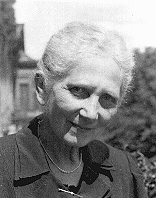
-
A page from the Fenyves family cookbook
ArtifactSteven Fenves (born Fenyves) and his family lived in Subotica, Yugoslavia. His father, Lajos, managed a publishing house and his mother, Klári (Klara), was a graphic artist. In April 1941, Subotica fell under Hungarian occupation. Until May 1944, the Fenyveses lived in one corner of their apartment while Hungarian officers took over the rest of the family’s home. In March 1944, Germany occupied Hungary. In April, Lajos was deported to the Auschwitz camp in German-occupied Poland. Steven, his sister…
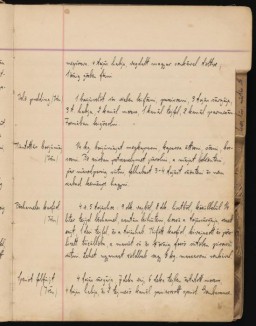
-
Another page from the Fenyves family cookbook
ArtifactSteven Fenves (born Fenyves) and his family lived in Subotica, Yugoslavia. His father, Lajos, managed a publishing house and his mother, Klári (Klara), was a graphic artist. In April 1941, Subotica fell under Hungarian occupation. Until May 1944, the Fenyveses lived in one corner of their apartment while Hungarian officers took over the rest of the family’s home. In March 1944, Germany occupied Hungary. In April, Lajos was deported to the Auschwitz camp in German-occupied Poland. Steven, his sister…
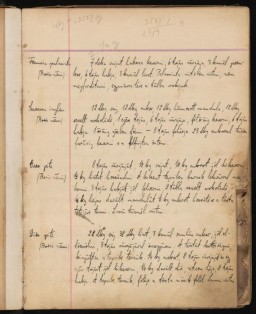
-
Additional page from the Fenyves family cookbook
ArtifactSteven Fenves (born Fenyves) and his family lived in Subotica, Yugoslavia. His father, Lajos, managed a publishing house and his mother, Klári (Klara), was a graphic artist. In April 1941, Subotica fell under Hungarian occupation. Until May 1944, the Fenyveses lived in one corner of their apartment while Hungarian officers took over the rest of the family’s home. In March 1944, Germany occupied Hungary. In April, Lajos was deported to the Auschwitz camp in German-occupied Poland. Steven, his sister…
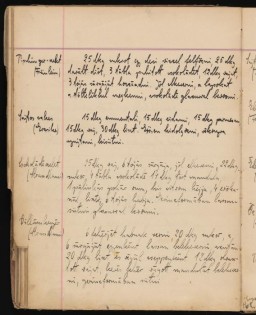
-
Istvan Geroe
ID CardIstvan was born to a Jewish family in the small agricultural city of Torokszentmiklos, about 65 miles from Budapest. Istvan worked for the Hungarian railroads during World War I, and afterwards earned a degree in pharmacology. In the 1920s Istvan married Barbara Nemeth and they settled in Torokszentmiklos. In 1929 the couple had a son, Janos. 1933-39: During the early 1930s, after the onset of the Depression, Istvan helped his father in the family's grain exporting business. In 1933 Istvan and Barbara…

-
Ilona Haas Geroe
ID CardIlona was one of seven children born to a Jewish family in the city of Szeged, about 100 miles south of Budapest. Her father was an accountant. At the turn of the century many of Ilona's father's relatives emigrated to the United States, but Ilona's father decided to stay. Ilona also became an accountant and got a job in Szeged. 1933-39: Ilona's work as an accountant kept her busy but her free time was spent enjoying music and sports. She also began to study English since so many of her relatives had…
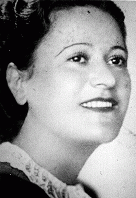
-
Barbara Kertesz Nemeth
ID CardBarbara and her younger sister, Alice, were born to a Jewish family in the town of Hodmezovasarhely in southeastern Hungary. Barbara married Desider Nemeth, a dentist, and the couple settled in the town of Szentes, not far from the city of Szeged. 1933-39: In 1932 Barbara gave birth to a daughter, Maria. She has been busy trying to find a suitable house for them that would double as an office for her husband. Barbara does a lot of volunteer work. She has taken in a young Austrian woman who lives with them…

-
Maria Nemeth
ID CardMaria's parents lived in Szentes, a town in southeastern Hungary, located 30 miles from the city of Szeged. Her mother, Barbara, was born in the neighboring town of Hodmezovasarhely, but moved to Szentes when she married. Maria's father was a dentist. 1933-39: Maria was born in 1932. In 1937 her mother took in a young Austrian woman who lived with the family and helped Maria learn German. 1940-44: In March 1944 German troops occupied Hungary. Members of the Hungarian fascist party, Arrow Cross,…

-
Curt Egon Rosenberg
ID CardCurt was the oldest of three children born to a Jewish family in the famous German university city of Goettingen. His father owned a linen factory that had been in the family since it was founded by Curt's grandfather. Goettingen had a small Jewish population, with only one synagogue. Curt attended public school in the city. 1933-39: The Nazis came to power in 1933. A year later, the Rosenbergs' factory was seized and the family was forced to move to Hamburg. Because he was Jewish, Curt was arrested in…
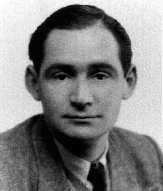
-
Eva Heyman
ID CardThe only child of a cosmopolitan Hungarian Jewish couple, Eva grew up in a city on the border between Romania and Hungary. Nearly one-fifth of the city's population was Jewish. Eva was a small child when her parents, Agi and Bela, divorced, and she went to live with her grandparents. 1933-39: After the divorce, Eva saw little of her mother, who remarried and moved to Budapest. She also rarely saw her father, who lived on the other side of the city. Eva lived with her grandmother and grandfather near the…
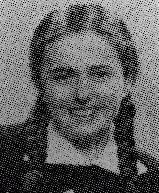
-
Alice Krakauerova Seelenfriedova
ID CardAlice was the third of six children born to Jewish parents in the small Moravian town of Hodonin, where her father ran a dry goods and clothing store. The family spoke both Czech and German at home, and Alice attended a German-language secondary school. After graduating, she married her teenage sweetheart, Otto Seelenfried, who was a chemical engineer. 1933-39: Alice and Otto moved to the town of Jihlava. In 1934 Otto died from a ruptured appendix, and Alice returned to live with her parents in Hodonin.…
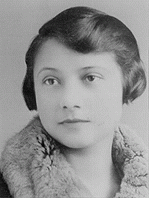
-
Max Krakauer
ID CardMax was the oldest of six children born to Jewish parents in the small Moravian town of Hodonin, where his father ran a dry-goods and clothing store. His family spoke both Czech and German at home, and Max attended German-language schools in Hodonin and Lipnik. He completed his education in 1920. Born with a heart condition, Max lived a sheltered life. 1933-39: Max's father, Bernard, was getting on in years and wanted to retire. Max was not strong enough to take over the business, so the Krakauers sold…

-
Alfred (Fredl) Krakauer
ID CardAlfred was the fifth of six children born to Jewish parents in a small town in Moravia, where his father ran a dry-goods and clothing store. The Krakauers spoke both Czech and German at home. In 1929 and 1930, after graduating from secondary school, Alfred served in the Czechoslovakian army. He enjoyed skiing and also played soccer for the Maccabi Jewish team. 1933-39: Alfred graduated in 1934 from Prague's Industrial School for Art. He became a graphic artist and decided to remain in Prague because of…
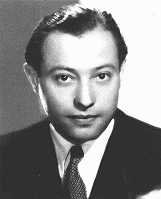
-
Josef Deutsch
ID CardJosef was born to Yiddish-speaking, religious Jewish parents in the town of Viseu de Sus in Transylvania, a region of Romania that belonged to Hungary until 1918. In 1890 he married Emma Geisler from the nearby town of Bistrita. The couple had four children and after 1910 the family lived at #4 Hid Street in Viseu de Sus. Josef was a merchant who owned a stall in Viseu de Sus's public market. 1933-39: By 1939 two of Josef's grown sons had moved to the Hungarian capital of Budapest. Josef and his wife…
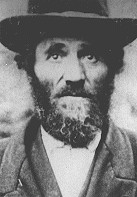
-
Chava Lea Deutsch
ID CardChava Lea was born Emma Geisler to Yiddish-speaking, religious Jewish parents. The Deutsch family lived in the village of Budacu de Sus in Transylvania, a region of Romania that belonged to Hungary until 1918. She grew up in the town of Bistrita. In 1890 she married Josef Deutsch, a salesman from the town of Viseu de Sus, where the couple moved in 1910. Chava and Josef raised four children. 1933-39: By 1939 two of Chava Lea's grown sons had moved to the Hungarian capital of Budapest. Chava Lea and her…

-
Laszlo Schwed
ID CardLaszlo was raised by Hungarian-speaking Jewish parents in the town of Kiskunfelegyhaza in southeastern Hungary. He opened a business selling goose meat, feathers, down and quilts. In 1931 he married Anna Mahrer, from Budapest, and they had a daughter in January 1932. 1933-39: Laszlo and Anna had a second child, a son. They raised their two children in a comfortable home. Kiskunfelegyhaza was located in a rural part of Hungary. In May 1939, the Hungarian government enacted a law that defined Jews as alien…
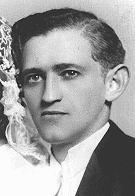
-
Mrs. Zinger's recipe for mocha cake
DocumentIlona Kellner and her family lived in Pelsöc, which became part of Hungary before World War II. Following the German occupation of Hungary, Ilona, her sister Vera, and her parents Karoly and Jolan were forced into a ghetto in another area of the town. In mid-June, the family was deported to the Auschwitz camp in German-occupied Poland. Ilona's parents were killed in the gas chambers at Birkenau. In early August, Ilona and her sister were deported to Hessisch Lichtenau, a subcamp of the Buchenwald…
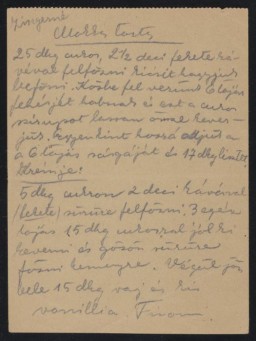
-
Mariska's recipe for hazelnut cake
DocumentIlona Kellner and her family lived in Pelsöc, which became part of Hungary before World War II. Following the German occupation of Hungary, Ilona, her sister Vera, and her parents Karoly and Jolan were forced into a ghetto in another area of the town. In mid-June, the family was deported to the Auschwitz camp in German-occupied Poland. Ilona's parents were killed in the gas chambers at Birkenau. In early August, Ilona and her sister were deported to Hessisch Lichtenau, a subcamp of the Buchenwald…
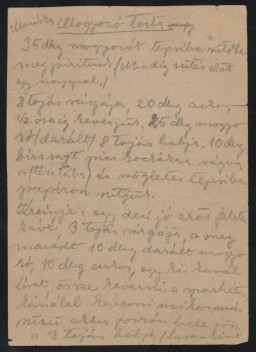
-
Ilona Kellner's recipe for various strudel fillings
DocumentIlona Kellner and her family lived in Pelsöc, which became part of Hungary before World War II. Following the German occupation of Hungary, Ilona, her sister Vera, and her parents Karoly and Jolan were forced into a ghetto in another area of the town. In mid-June, the family was deported to the Auschwitz camp in German-occupied Poland. Ilona's parents were killed in the gas chambers at Birkenau. In early August, Ilona and her sister were deported to Hessisch Lichtenau, a subcamp of…
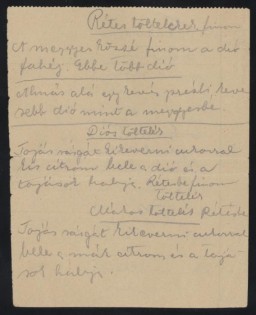
-
Ilona Kellner's recipe for butter scones with jam
DocumentIlona Kellner and her family lived in Pelsöc, which became part of Hungary before World War II. Following the German occupation of Hungary, Ilona, her sister Vera, and her parents Karoly and Jolan were forced into a ghetto in another area of the town. In mid-June, the family was deported to the Auschwitz camp in German-occupied Poland. Ilona's parents were killed in the gas chambers at Birkenau. In early August, Ilona and her sister were deported to Hessisch Lichtenau, a subcamp of the Buchenwald…
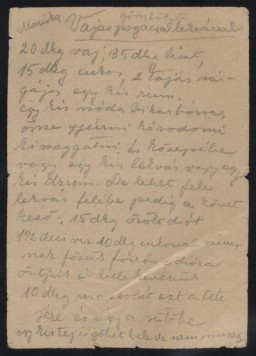
-
Alan Zimm describes a hanging in the Dora-Mittelbau camp
Oral HistoryThe Germans occupied Kolo in 1939. In 1942 Alan was deported to the Lodz ghetto where he worked in food distribution. He took food each day to Mordechai Chaim Rumkowski, chairman of the Jewish council. In 1944 Alan was forced to unload trainloads of coal and munitions in Czestochowa. In 1945 he was sent to the Dora-Mittelbau camp. As the Soviet army advanced, the inmates were transferred to Bergen-Belsen, where British forces liberated them in April.
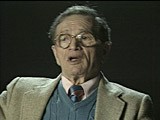
-
Sam Spiegel describes hiding in woods before liberation
Oral HistoryIn 1942, Sam was forced into a ghetto in his hometown and assigned to work in a munitions factory. In 1944 he was transported to Auschwitz and then forced to work in a train factory. He survived eight days on a death march after the evacuation of Auschwitz by the Nazis. He was liberated by Soviet units in January 1945. He lived in a displaced persons camp in Germany where worked for the United Nations Relief and Rehabilitation Administration. In 1947, he immigrated to the United States.

-
Irene Weber describes how obtaining a work card could offer protection from deportation
Oral HistorySeparated from her family, Irene was deported from the Sosnowiec ghetto to the Gleiwitz camp in March 1943. After a death march and an attempted escape from a transport out of Gleiwitz, Irene was imprisoned in Prague, then Theresienstadt, where as a political prisoner she was sentenced to death by starvation. For the five months before liberation, she shared a cell with 59 ailing women. Irene was the sole member of her Jewish family to survive the war.

-
2004 portrait of Blanka Rothschild
PhotoBlanka was an only child in a close-knit family in Lodz, Poland. Her father died in 1937. After the German invasion of Poland, Blanka and her mother remained in Lodz with Blanka's grandmother, who was unable to travel. Along with other relatives, they were forced into the Lodz ghetto in 1940. She and her mother were deported to the Ravensbrueck camp in Germany in 1944. From Ravensbrueck, Blanka and her mother were sent to a subcamp of Sachsenhausen. Blanka was forced to work in an airplane factory…
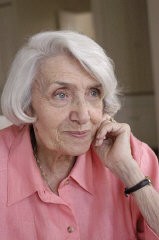
-
Blanka Rothschild in 2004
PhotoPhotograph of Blanka Rothschild taken in 2004. Blanka was an only child in a close-knit family in Lodz, Poland. Her father died in 1937. After the German invasion of Poland, Blanka and her mother remained in Lodz with Blanka's grandmother, who was unable to travel. Along with other relatives, they were forced into the Lodz ghetto in 1940. She and her mother were deported to the Ravensbrueck camp in Germany in 1944. From Ravensbrueck, Blanka and her mother were sent to a subcamp of Sachsenhausen. Blanka…
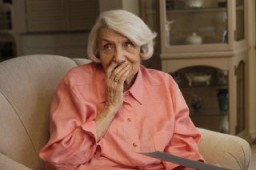
-
Hana Mueller Bruml describes an encounter with a non-Jewish friend in Prague
Oral HistoryIn 1942, Hana was confined with other Jews to the Theresienstadt ghetto, where she worked as a nurse. There, amid epidemics and poverty, residents held operas, debates, and poetry readings. In 1944, she was deported to Auschwitz. After a month there, she was sent to Sackisch, a Gross-Rosen subcamp, where she made airplane parts at forced labor. She was liberated in May 1945.
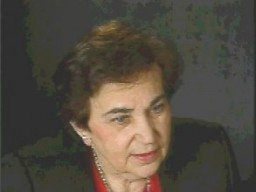
-
Elie Wiesel: Days of Remembrance excerpts
ArticleExcerpts from Elie Wiesel's addresses during US Holocaust Memorial Museum Days of Remembrance commemorations in 2001, 2002, 2003, and 2004.
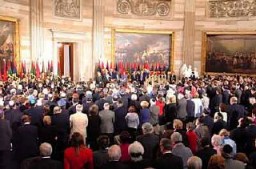
-
Adolf Eichmann: Key Dates
ArticleAdolf Eichmann was a key figure in implementing the “Final Solution,” the Nazi plan to kill Europe's Jews. Learn more through key dates and events.

-
Lublin/Majdanek Concentration Camp: Administration
ArticleIn 1940, the Nazis established Lublin (Majdanek) concentration camp in Lublin, Poland. Learn more about camp administration.
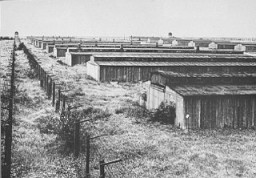
-
Stutthof
ArticleLearn about the Stutthof camp from its establishment until liberation in May 1945, including conditions, forced labor, subcamps, and death marches.
